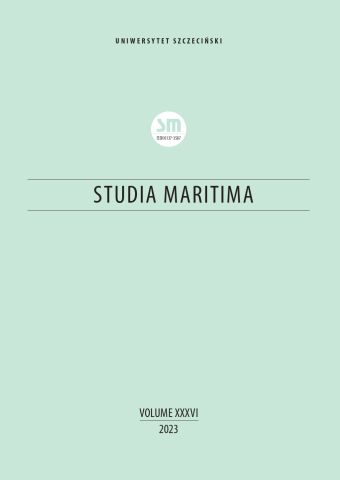






| Authors: |
Elżbieta
Mydłowska

Institute of Spatial Management and Socio-Economic Geography University of Szczecin |
| Keywords: | Geocaching Adventure Lab tourism space tourism product coastal areas |
| Data publikacji całości: | 2023 |
| Page range: | 22 (135-156) |
| 1. | Adventure Lab® Top 5 Adventure Tips. Accessed 8 January 2023. https://www.youtube.com/ watch?v=34gVR0PP70I. |
| 2. | Badge Regulations PTTK Geocaching Polska. Accessed 29 December 2022. http://www.msw-pttk.org.pl/odznaki/reg_odznak/reg_opttkgp.html. |
| 3. | Boyer, Marc. Le Toursme. Paris: Du Seuil, 1972. |
| 4. | Dobek, Mateusz, Marcin Kozieł, “Geocaching w Roztoczańskim Parku Narodowym.” Annales Universitatis Mariae Curie-Skłodowska, sectio B, 70 (2015), 2: 191–207. Accessed 29 December 2022. DOI: 10.17951/b.2015.70.2.191. |
| 5. | Geocaching & the Adventure Lab. Accessed 8 January 2023. https://www.youtube.com/ |
| 6. | watch?v=uEyrOXjh9bc. |
| 7. | Geocaching Adventure Lab. Accessed 8 January 2023. https://adventure.geocaching.com. |
| 8. | Geocaching Polska. Accessed 29 December 2022. http://geocaching.pl. |
| 9. | Geocaching. Accessed 16 April 2023. https://www.geocaching.com/play. |
| 10. | Kaczmarek, Jacek, Andrzej Stasiak, and Bogdan Włodarczyk. Produkt turystyczny. Warszawa: Polskie Wydawnictwo Ekonomiczne, 2005. |
| 11. | Kaczmarek, Jacek, Andrzej Stasiak, and Bogdan Włodarczyk. “Produkt turystyczny i jego ewolucja.” Turyzm/Tourism 11 (2007), 1: 7–23. Accessed 17 April 2023. |
| 12. | Latosińska, Jolanta. “Przestrzeń turystyczna - jedno pojęcie dwa znaczenia. Rozważania na temat indywidualnej przestrzeni turystycznej.” Turyzm/Tourism 16 (2006), |
| 13. | 2: 93–98. Accessed 15 December 2022. DOI: 10.12911/22998993/113422. |
| 14. | Lisowski, Andrzej. Koncepcje przestrzeni w geografii człowieka. Warszawa: Uniwersytet Warszawski, Wydział Geografii i Studiów Regionalnych, 2003. |
| 15. | Łuczak, Mariola. “Znaczenie szlaku jako produktu turystycznego w kreowaniu wizerunku regionu.” Zeszyty Naukowe Uniwersytetu Szczecińskiego 867, Problemy Zarządzania, Finansów i Marketingu 40 (2015): 21–32. Accessed 17 April 2023. DOI: 10.18276/pzfm.2015.40-02. |
| 16. | Middleton Victor T. C. Marketing w turystyce. Warszawa: Polska Agencja Promocji Turystyki, 1996. |
| 17. | Pickaver, Alan. Integrated Coastal Zone Management in the Baltic States. |
| 18. | State of the Art Report. Background for Coastal Planning and Management |
| 19. | in the Baltic Sea Region. EUCC–The Costal Union: 2003. Accessed 2 January 2023. https://eucc-d-inline.databases.eucc-d.de/files/documents/00000657_EUCC_Baltic_ ICZM_State_of_Art.pdf. |
| 20. | Pirveli, Marika. “Istota zjawiska turystyki.” Wójt i Jego Gmina 6 (listopad/grudzień 2008), 37: 54–69. |
| 21. | Pirveli, Marika. Kreowanie Produktu Turystycznego - Wykład 1 (5) / TiR. (Unpublished materials). Accessed 29 December 2023. https://www.researchgate.net/ publication/367117866_Kreowanie_produktu_turystycznego_W15. |
| 22. | Product development. Accessed 28 December 2022. https://www.unwto.org/tourism- development-products. |
| 23. | Skóra, Joanna Maria. “Geocaching jako innowacyjna forma odkrywania walorów przyrodniczych i kulturowych w Polsce studium przypadku powiatu poznańskiego.” Warsztaty z Geografii Turyzmu 1 (2017), 8: 101–110. Accessed 28 December 2022. https://doi.org/10.18778/2544-7440.01.11 |
| 24. | Smoleńska, Olga. “Najnowsze trendy w turystyce eventowej. Gry fabularne i wydarzenia związane z fantastyką i technologią XXI wieku.” Turystyka Kulturowa 8 (2009): 31–39. Accessed 28 December 2022. http://turystykakulturowa.org/ojs/index.php/tk/article/ view/389. |
| 25. | Stasiak, Andrzej. “Produkt turystyczny – szlak.” In: Turystyka i hotelarstwo/Tourism and Hotel Industry 10, ed. Andrzej Stasiak, 9–40. Łódź: Wydawnictwo WSTH, 2006. |
| 26. | Stasiak, Andrzej. “Współczesne przestrzenie turystyczne.” In: Przestrzeń turystyczna. Czynniki, różnorodność, zmiany, eds. Małgorzata Durydiwka, and Katarzyna Duda- -Gromada, 39–51. Warszawa: WEMA Wydawnictwo-Poligrafia, 2011. |
| 27. | Warszyńska, Jadwiga. “The Main Research Problems in the Geography of Tourism.” Turyzm/Tourism 9 (1999), 1: 37–50. Accessed 28 December 2022. https://doi.org/10.18778/0867-5856.9.1.03 |
| 28. | Włodarczyk, Bogdan. “Przestrzeń turystyczna – kilka słów o istocie pojęcia.” In: Przestrzeń turystyczna. Czynniki, różnorodność, zmiany, eds. Małgorzata Durydiwka, and Katarzyna Duda-Gromada, 15–27. Warszawa: WEMA Wydawnictwo-Poligrafia, 2011. |
| 29. | Włodarczyk, Bogdan. “Przestrzeń turystyczna – pojęcie, wymiary, cechy.” Turyzm/ Tourism 17 (2007), 2: 145–158. |
| 30. | Włodarczyk, Bogdan. “Space in tourism, tourism in space: on the need for definition, delimitation and classification.” Turyzm/Tourism 24 (2014), 1: 25–34. Accessed |
| 31. | 15 December 2022. DOI: 10.2478/tour-2014-0003. |